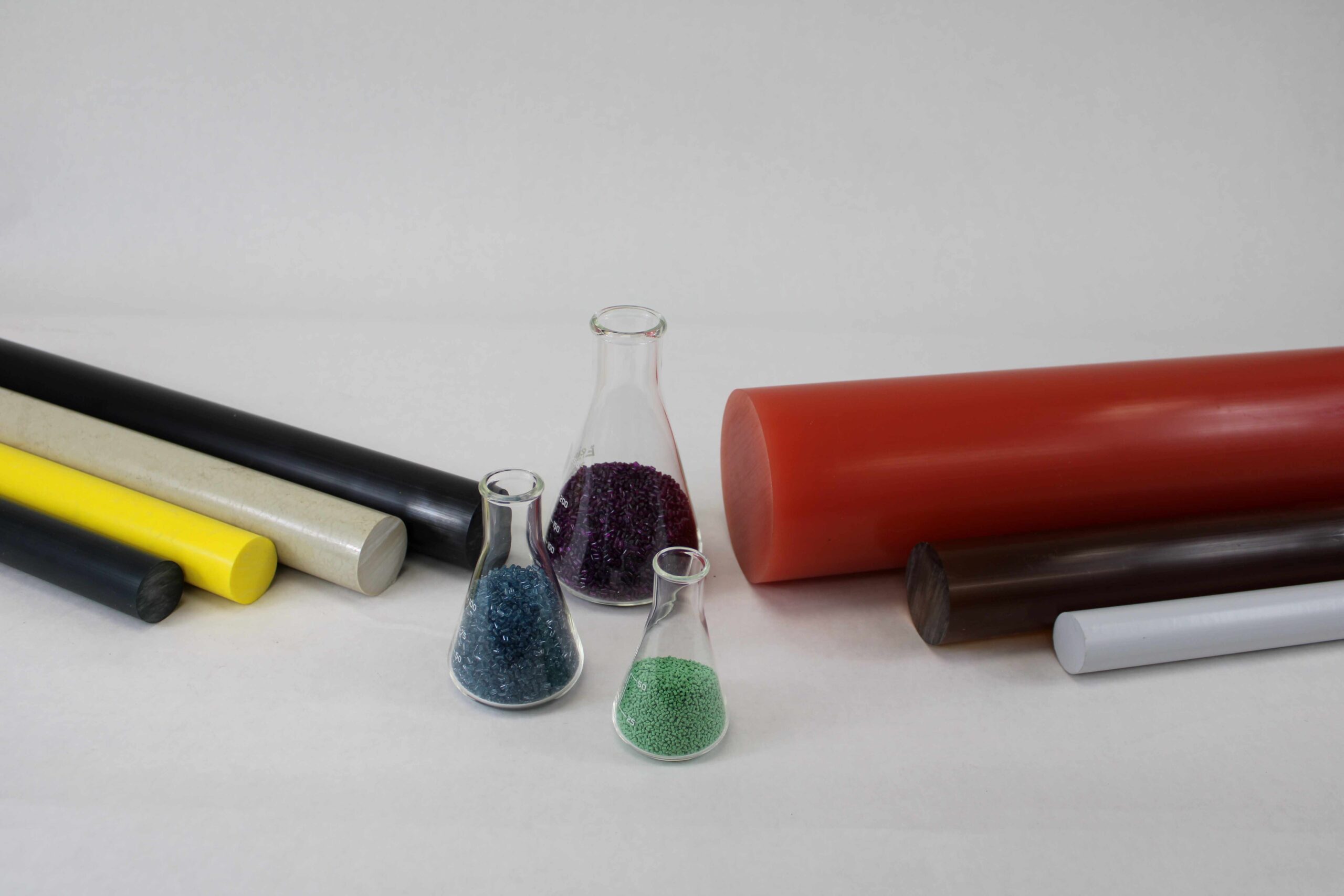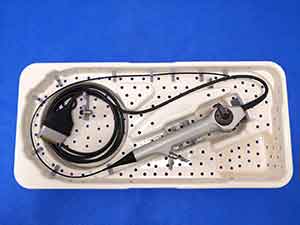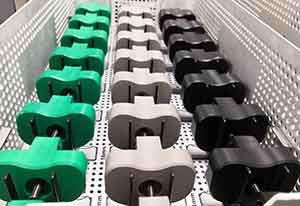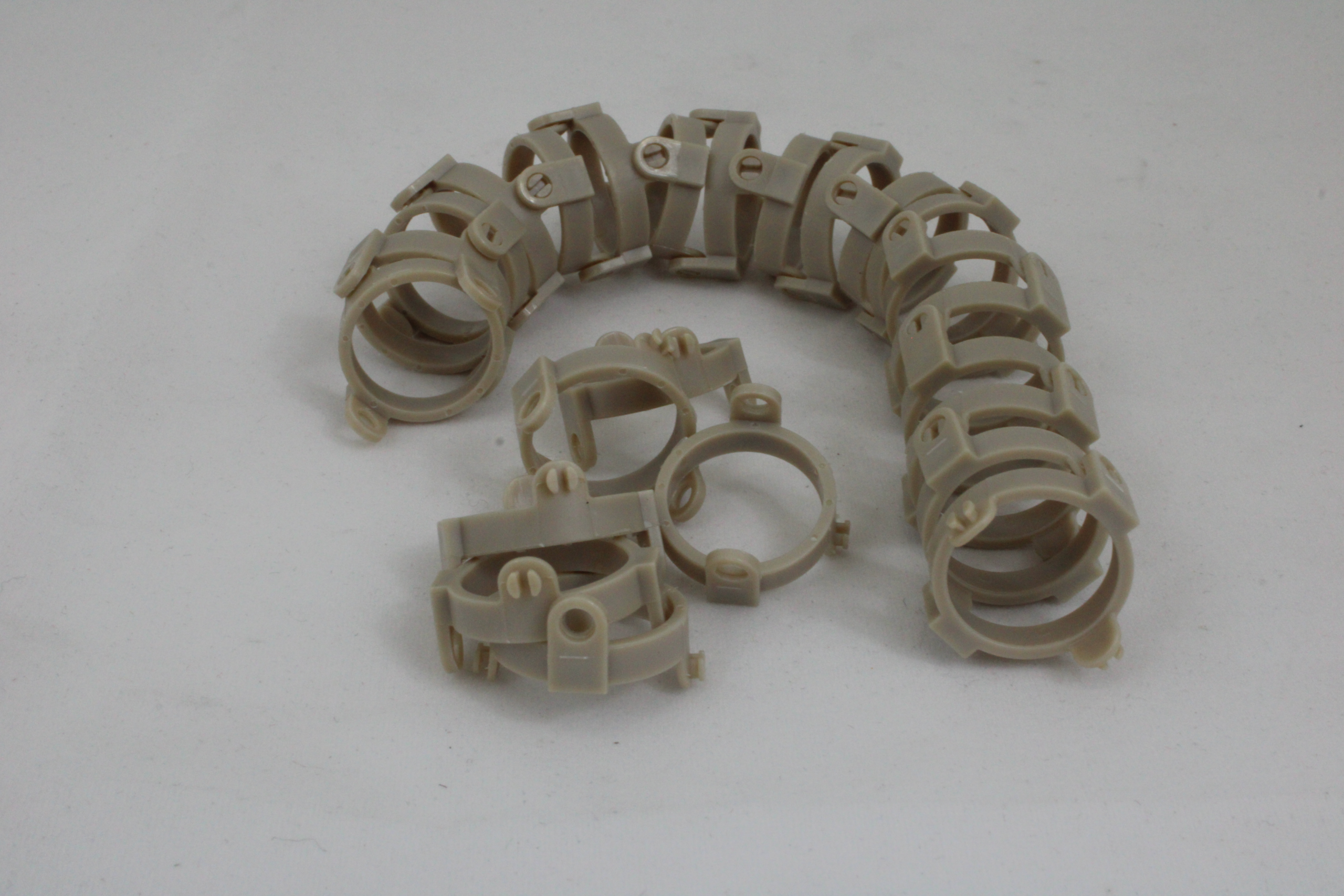Medical device manufacturers have long recognized the advantages plastics offer over metals. The rapid growth of these light-weight, versatile and cost-effective materials in the health care industry verifies their benefits. In fact, plastics now comprise an estimated 50% of materials used in medical devices. Plastics producers have also stepped up to meeting the performance needs of new and more challenging medical devices by developing highly specialized grades. Their innovations include polymer formulations with more strength, rigidity and resistance to virtually unlimited sterilization cycles. In recent years, polymers have also gained wide acceptance for use in implantable medical devices.
Finding the best options for medical plastics is complex.

Each new polymer that’s developed adds another entry to the spectrum of plastics for medical devices. While innovations in polymer technology bring benefits, the expanding array of options makes material selection more complex. Designers may find it challenging to sort through the candidates and find the medical grade plastic with the best balance of physical properties, cost and the attributes that will facilitate regulatory compliance for their devices.
What are “medical grade” plastics?

“Medical grade” broadly describes a number of plastics used successfully in a host of different medical devices. The materials differ widely in their chemical structure and performance characteristics. These differences make certain plastics best-suited to meeting the performance requirements of specific medical devices.
There is, however, no clear scientific definition for “medical grade plastics,” nor does the FDA provide one. Polymer producers often use the term to clearly differentiate their medical grades from the industrial or general purpose versions. It also helps device designers identify those plastics successfully used in medical applications.
Key selection factors: Regulatory compliance and performance in use.
Two essential criteria in selecting a plastic are its likelihood of facilitating regulatory approval for the device, and whether its physical properties will ensure the device’s performance in use.
FDA compliance.
Polymers have different chemical compositions that may react differently in the body. This necessitates robust regulatory testing to determine the likelihood that the polymer will make it through testing and facilitate FDA approval for a specific device.
Physical properties for performance in use.
Polymers must have the physical properties to support the device’s functionality. They must also withstand exposure to sterilization and any chemicals encountered in use.
Basic information on both these areas is summarized in the following sections. It may provide a starting point toward narrowing the range of medical polymer candidates for specific devices.
The FDA classifies types of device applications but not the plastics used.

As the primary regulatory body for medical device manufacturers, the FDA categorizes all devices into three regulatory classes based on the level of control necessary to assure the device’s safety and effectiveness. This includes the primary criteria of the “biocompatibility” standards that apply to each device. The agency bases its standards largely on ISO 10993-1, “Biological evaluation of medical devices – Part 1: Evaluation and testing within a risk management process.” The standards spell out requirements based on how devices come in contact with the body. They also define the length of contact time.
Regarding plastics used to manufacture medical devices, the FDA does not give an automatic approval to specific types. Manufacturers must prove that each device meets the requirements for its intended use.
Biocompatibility: the key factor for plastics in medical devices.
The FDA evaluates medical devices based on their biocompatibility. Potential for an inflammatory or toxicity response that may result from contact with the body is the focus. Considerations include whether the device – and therefore the plastic material it’s made from – contacts the human body internally or externally. Frequency and length of contact time with body fluids are also important factors that determine the testing protocol.
The FDA provides very clear definitions on testing requirements for different types of devices based on these factors. As examples, a permanently implanted plastic device has to meet markedly different requirements than a surgical instrument made from a polymer.
All FDA classes of devices utilize plastics to some extent.
The FDA classifies medical devices by their potential risk to human health. The classes vary from simple external-use products to life-critical implanted devices. Regardless of the risk level, however, the biocompatibility of the plastics used in the different classes of devices is an important factor in their approval process.
Class 1 devices:
These devices are seen as having the lowest risk level. They generally don’t require a formal regulatory review. Some examples of medical products in this class are knee braces and bandages.
Class 2 devices:
Devices in this class are deemed to be of greater risk to patients or users. Most require a 510(k) application. Examples include coronary catheters.
Class 3 devices:

These pose the highest level of risk. They support or sustain human life, may be harmful to health, or raise the risk of illness or injury. Most devices in this class require a pre-market approval (PMA) application. Heart valves are an example.
FDA device application processes: where plastics are involved.
The FDA’s requirements for new devices include facility registration, device listing, and device approval or notification. Of these, the device approval process directly involves the plastic material from which the device is made. The following summarizes some related information:
510(k): equivalency can facilitate the approval process.
New devices submitted for FDA approval are often made from plastics that have a solid and well-documented history of safe use. In these cases, the FDA may not require the full battery of testing to show that the new device is equivalent to other devices that have been in use for some time. A submittal to the FDA based on device equivalency of this kind is termed a 510(k) Premarket Notification. This type of notification is generally needed for most Class 2 medical devices.
Premarket Approval (PMA): the most stringent process.
Premarket Approval is the most stringent approval process. It applies to most Class 3 devices such as those that are permanently implanted. In this approval process it is essential to provide scientific evidence to show that the device is both safe and effective for its intended use. This more rigorous process requires laboratory studies and clinical investigations. Plastic materials used in these devices clearly are critical components.
Implantable polymer suppliers’ test data can support approval submittals.

Producers of implantable plastics such as PEEK and PAEK may help facilitate the PMA process for Class 2 and Class 3 devices. These plastics suppliers have conducted a thorough battery of toxicological and other tests and under specific circumstances will allow device manufacturers to reference the results in their Master Files on each material. This can save the device manufacturer both cost and the time involved in testing the plastic itself. In any case, however, all Class 3 devices still must be tested as such to prove their safety and efficacy.
Physical performance of medical plastics
Detailed information is available on the gamut of medical grades of polymers such as acetal, polypropylene, PEEK, PAEK, Radel PPSU and Ultem PEI. Polymer suppliers offer properties data, regulatory information and typical applications. Because there can be different test methods for a given property, designers should compare data based on the same test procedures and conditions.
Polymer conversion specialists who transform medical polymers by injection molding, extrusion and machining can also provide useful information in addition to lab data. Their scope includes actual polymer performance in the components they have produced. They also have the expertise in processing that can provide guidance on the complexity of designs that can be manufactured, and the optimum production method.
These basic properties are important for many types of medical devices. There are other more specialized properties as well. Data comparisons can help indicate the relative performance of polymers as a basis for identifying candidates:
Strength and stiffness
Surgical tools and handles, trays and housings require rigidity. Tensile and flexural properties are good indicators of a polymer’s performance in this area. Medical polymers are also available with fiber reinforcement that boosts rigidity significantly.
Toughness, durability
Impact resistance properties indicate a plastic’s ability to withstand the rigors of use in medical environments. Data is available at ambient as well as cold temperatures which could be important for applications involved in storing or handling refrigerated materials.
Sterilization resistance
Prolonged and repeated sterilization can significantly affect device performance long term. Medical grade polymers marketed for sterilizable applications typically have supporting data for different sterilization methods such as steam, gamma radiation and ethylene oxide gas (ETO), along with the conditions and number of sterilization cycles involved.
Chemical resistance
The number of different sanitization products makes it difficult to provide comprehensive data on a polymer’s resistance to all of them. Polymer producers however can provide good guidelines on their materials’ resistance to specific chemicals at various temperatures.
Real world testing: essential.
Properties data based on laboratory testing of polymer samples can provide a good basis for comparing medical plastics. Such data, however, only serves as an initial guide.
To confirm actual performance, manufacturers must test their devices and components under real world conditions.
